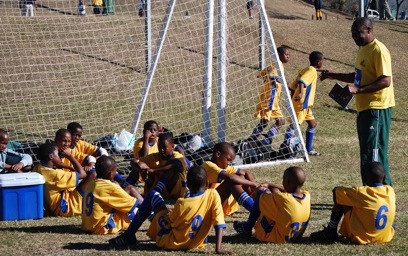
National football styles are intertwined with a country’s history and culture. Can Pitso Mosimane, Bafana Bafana’s new homegrown coach, develop a common ‘South African’ playing style? If the former SuperSport coach and Bafana assistant succeeds, he will have done better than his Brazilian, Romanian, English, Portuguese, and French predecessors.
‘South African football is a sort of United Nations,’ writes Izichwe Youth Football director Thabo Dladla in his ‘Talking Football’ column this week. ‘You have parts of the country like the Western Cape with their English influence, inland areas with diski [street style] influence, some German and Dutch influence in SAFA structures, [and more recently] Brazilian and Serbian influences.’
Clearly, Mosimane faces a daunting challenge in trying to craft a common style out of a melange of local and foreign influences. ‘South African football is more about ball retention and individual improvisation,’ Dladla notes. ‘We grow up playing in small spaces, on hard, bumpy surfaces. The small frame and short-to-medium height of the majority of our players make it logical to play mainly short passes on the ground.’
World champions Spain point the way forward for South Africa. It’s not a question of conveniently jumping on the winners’ bandwagon. Rather, Dladla notes that ‘Spanish football is based on technique, ball possession and nimble short-passing combination.’ That Spain’s 11 starters in the World Cup all play in La Liga further inspires many South Africans eager to raise the quality of the domestic Premier Soccer League.
Will South Africa’s performances improve under Mosimane? Will a new national style of play reflect the sharper sense of South Africanness left by the 2010 World Cup? Perhaps, but until that time local fans will keep on blowing vuvuzelas in the stadiums: ‘They are bored,’ says Dladla, ‘There is nothing to entertain them between the lines.’